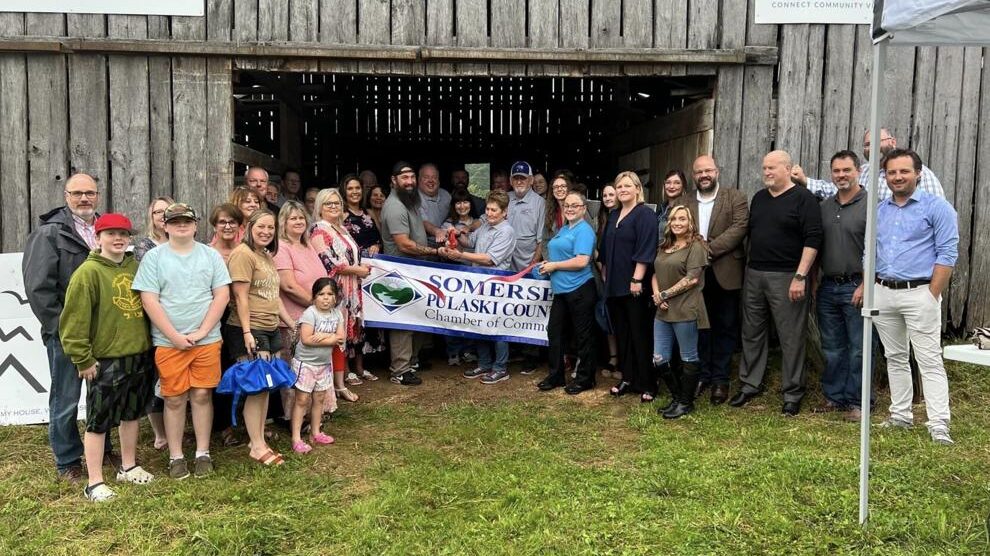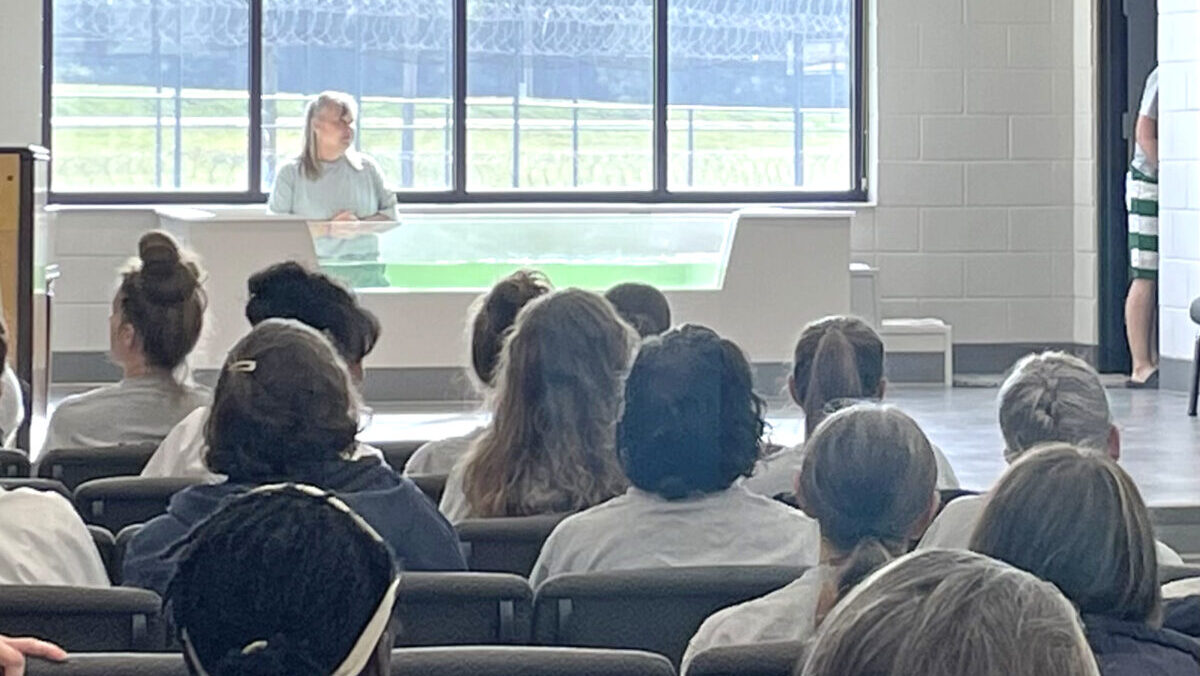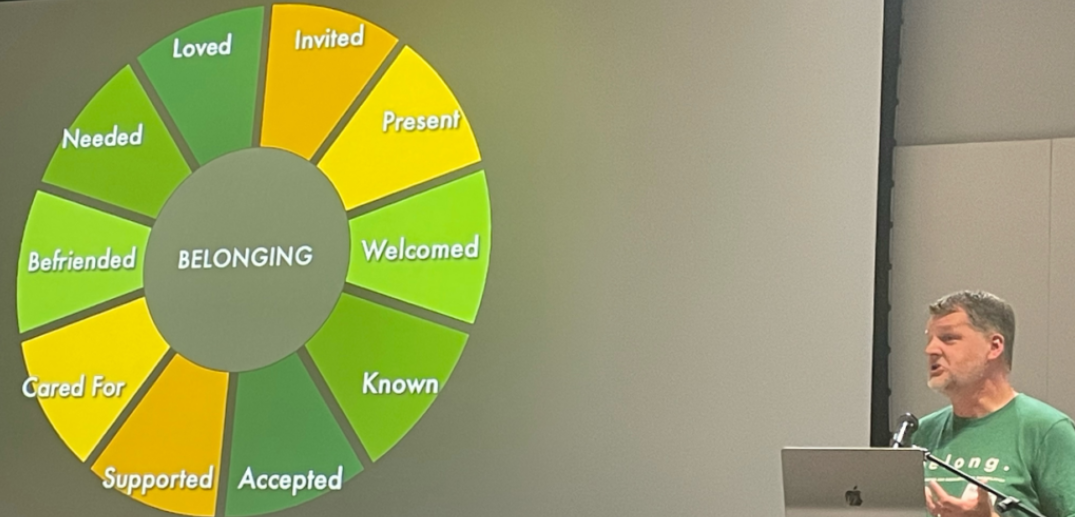High Street Baptist Church in Somerset, Kentucky, has been a ministry incubator for the Pulaski County community.
Several ministries that have helped the community have come out of the church in recent years. The latest example is the Connect Community Village (CCV), a faith-based transitional living space for homeless veterans that plans to open 25 tiny homes in its own community as soon as next spring.
It has been long in the planning stages for Virginia Dial, the CEO of the organization and a community activist who has spent a lifetime helping people in rehabilitation or jail cells through other ministries, including an organization named Hearts Cry.
CCV has gone from dream to reality after Dial spoke with High Street pastor Ed Amundson, who has encouraged and helped the organization became a non-profit and begin to take shape.
‘Commitment’
Dial found the property she needed about seven miles outside Somerset, a sprawling 20 acres that includes a barn that will be repurposed into a general store for the community of homeless veterans who are simply trying to get back on their feet through a variety of circumstances.
They have been working with the Veterans’ Administration, which has been enthused about the project said they could supply them with qualified candidates by the dozens to live in the community.
As a Christ-centered program, CCV would encourage residents to develop life skills that boost their re-integration into society. They would live in homes of some 400 square feet to promote independent living, while still offering stability and access to community resources.
“We were in the planning stages for so long,” Dial said. “It’s a really complicated endeavor. It took a lot of planning. You couldn’t just throw this thing together and make it work. It took the right people. It took the right combination of people that had the same vision and had the same commitment to our veterans to make this all come together.”
The Pulaski County Chamber of Commerce recently had a ribbon-cutting ceremony for the CCV that included many community leaders who supported Dial’s vision. Pulaski County seems on board with the homeless veterans community.
Involvement
Amundson and High Street Baptist have been instrumental in getting the project going as well. The church’s ministries are well known throughout the Somerset community. “We are a very body-minded church,” the pastor said. “We partner with other churches around us on a couple of different levels.”
Amundson said Dial came to the church office one day after Hearts Cry helped on a donation of a hot water heater. The two began to talk and realized a similar vision that included tiny houses.
“We want to gradually reintroduce them to taking responsibility for their living,” Amundson said. “Veterans come through drug treatment program for 12 months and then it’s like, OK, good luck. They have no transportation and no job. Most have burned bridges with families. They need that next thing to bridge the gap once they’re done with treatment and done with the VA, and now what? This is the now what.”
Dial also has a passion for making CCV a faith-based organization, and Amundson said the gospel would be shared in some of the classes the veterans will be taking.
He has church members renovating the barn into the country store. “A lot of our members are skilled people. We have several people who participated in building fences, gardening, getting the pond ready and basic utilities. We will do as much as possible.”
Tommy Floyd, the associational mission strategist for Lake Cumberland region, has done flooring and will be donating that service for the tiny homes, Amundson said, while other church members are helping in a variety of other areas.
It has become a community-wide project.
Somerset Community College partnered with CCV and it applied and received a $1.6 million grant for a 3D printer that prints in large scale – large enough to build the shells for the 400-square-foot tiny homes.
Dial has done her research on the tiny homes and how they can work in the ministry setting. She worked in jail ministries, celebrate recovery groups and the Hearts Cry ministry and she saw many of the same people relapse. “I saw generations of it,” she said. “Mothers, daughters and grandparents. In prayer, I began seeking what the answer may be.”
She had a dream about the tiny house community and while scrolling Facebook, found a Mobile Loaves and Fishes organization in Austin, Texas, that used the tiny home concept to build a community. She attended a three-day seminar and learned how they developed a community for the homeless through tiny homes. Dial also researched other similar situations for the homeless.
“I found out a lot of veterans had lot of same issues in recovery,” she said. “We felt the need to address our veterans first because they have given so much to our country. I took all this information and began to concentrate on veterans.”
‘Gospel touch’
Finding the property for the project was another blessing, Dial said, and it happened quickly, as Amundson told her it would.
A new board member found the property outside of town and immediately called Dial, who reached out to her realtor. Meanwhile, Dial was keeping the board members informed via texts and emails in case a deal needed to be brokered. The realtor told her there was another offer and if they were interested, they needed to make an offer, too. They made an offer at 6 p.m. and the realtor texted her around 8:30 that it had been accepted.
“Bro. Ed said when it happens, it will happen quickly,” she said. “It’s 20 acres and has a pond on it, and it’s already sectioned off with fencing. This is definitely a God thing all the way through. It’s His plans, we were just the hands and feet.”
The message of the gospel will be at the heart of what happens at the Connect Community Village, Amundson promised.
“Everything will have a gospel touch,” he said. “We will unapologetically share the gospel over and over because that’s the ultimate need they have.”
Anyone interested in helping or learning more can contact Dial at ccvdial@gmail.com
EDITOR’S NOTE — This story was written by Mark Maynard and originally published by Kentucky Today.








